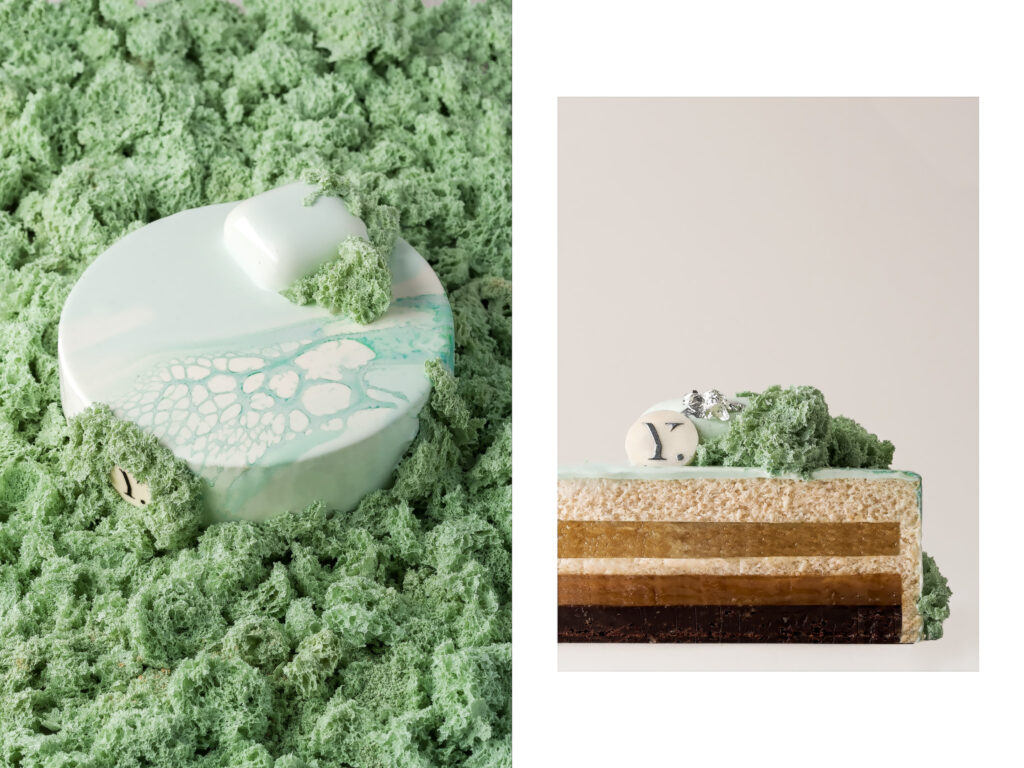
Today, I was thinking that cake decorating is also a kind of art. To make the decoration look perfect, one must be not just a pastry chef but also an artist. All the details should complement each other, never contradicting. And the mirror glaze? It’s the perfect backdrop for the decor. By the way, today we observed the magical process of covering a cake with mirror glaze.
As always, Ekaterina Yablonskaya not only showed how she prepares the mirror glaze but also explained all the nuances that are important to achieve a perfect glaze. By the way, as you may remember, in the last video we assembled the cake, and today we have the final step – covering the cake with mirror glaze.
Coating pastries with glaze, as well as the process of making it, is an extremely complex task that requires precision and strict adherence to the recipe. The glaze must be perfectly glossy to achieve the full mirror effect. Additionally, the surface of the pastry must be flawless—mousse-based, frozen, and free of condensation—so that the glaze spreads smoothly and evenly.
Mirror glaze is probably one of the most versatile ways to decorate desserts. It can be colored in any shade, given a marble effect, and enhanced with various details. Its glossy shine gives the pastry a magical appearance, making it almost too beautiful to eat. And our talented pastry chef, Ekaterina Yablonskaya, decorates cakes so beautifully that you enjoy not only their impeccable taste but also their stunning presentation.
150 g Water
300 g Sugar
300 g Glucose syrup
200 g Condensed milk
300 g White chocolate
20 g Gelatin
120 g Water for gelatin
Water-soluble food coloring

Soak the gelatin in cold water.
Cook a syrup by heating water, sugar, and glucose to 103°C (217°F).
Turn off the heat and add condensed milk. Mix well.
Add the white chocolate and stir until fully melted.
Incorporate the gelatin into the mixture.
Blend with an immersion blender until smooth.
Add food coloring to achieve the desired shade.
Let it rest for 6–8 hours to eliminate air bubbles.
Reheat to 35–38°C (95–100°F) before using.
Blend again with an immersion blender to remove any remaining bubbles.
Pour the glaze over a frozen cake using circular motions.
Remove excess glaze from the sides.
Place the cake on a serving board.
Decorate with fresh raspberries, dehydrated raspberries, and edible gold leaf for an elegant finish